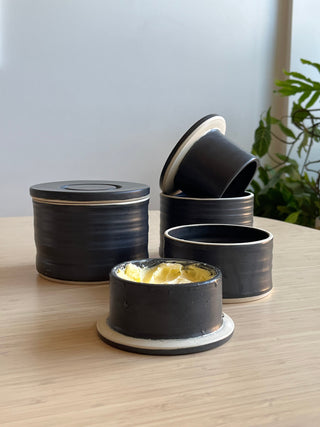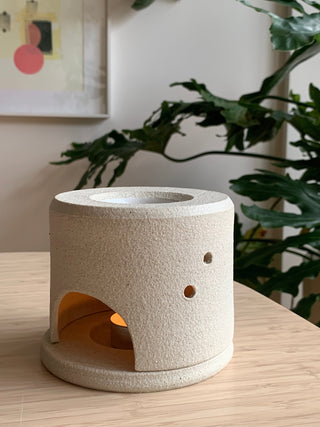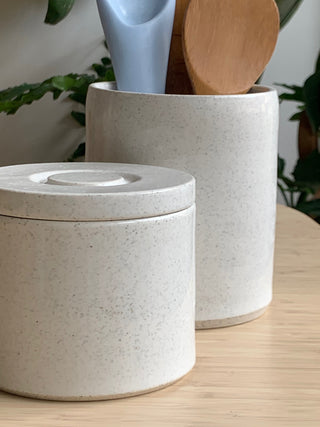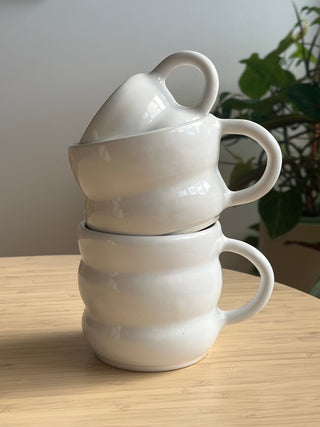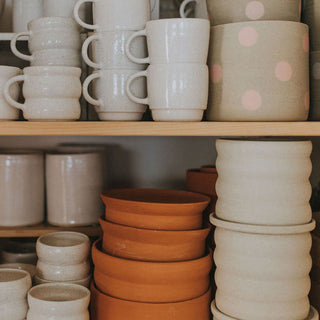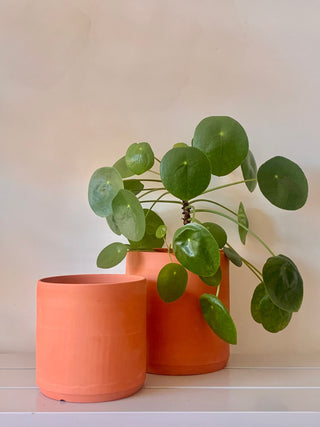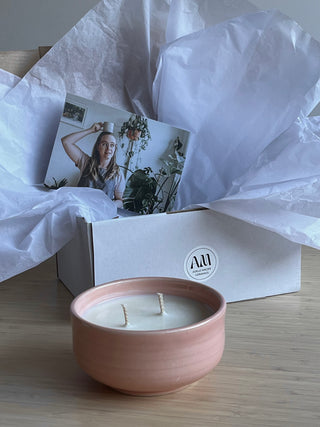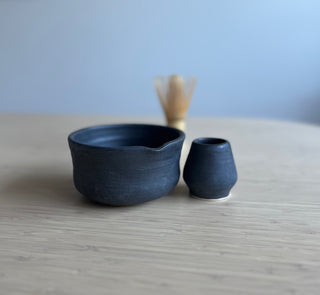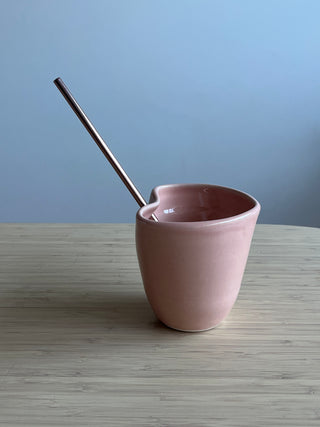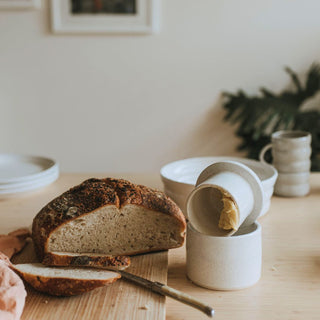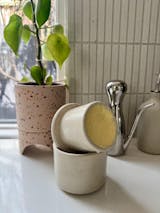How to Use a Butter Bell (French Butter Keeper) to Keep Butter Fresh
Butter lovers everywhere know the frustration: rock-hard butter straight from the fridge, or butter left out that quickly turns rancid. Enter the Butter Bell, also known as a French butter keeper or ceramic butter dish. This clever little piece of kitchenware keeps butter soft, fresh, and spreadable — without refrigeration.
In this guide, you’ll learn how to pack, use, and care for your Butter Bell, plus the science behind why it works in both hot and cold climates.
How to Pack and Use Your Butter Bell
Step 1: Prepare the Butter
Place your unwrapped butter directly into the lid of the butter bell. You don’t need to fill it completely — half full works fine as long as the seal is made.
Step 2: Add Water for an Airtight Seal
Fill the base with about 1cm of cold water, just enough so it touches the rim of the lid when closed. This creates the airtight seal that keeps your butter fresh.
Step 3: Secure the Lid
Close the lid firmly to keep oxygen and bacteria away from your butter.
Step 4: Store in a Cool Spot
Keep your butter bell away from direct sunlight and heat. A pantry or cool kitchen bench is ideal.
How Does a Butter Bell Work?
The Science Behind It
It’s surprisingly simple. The ceramic butter keeper acts as insulation, helping regulate temperature (just like ceramic mugs hold heat). Meanwhile, the thin layer of water seals out oxygen, which is one of the main culprits that makes butter go rancid.
Why Ceramics Keep Butter Fresh
Ceramics retain temperature better than glass or metal, keeping butter stable and spreadable.
The Role of the Water Seal
The water layer prevents air from reaching your butter, extending its life naturally.
Salted vs. Unsalted Butter in a Butter Bell
Why Salted Butter Lasts Longer
Salt is a natural preservative, so salted butter often stays fresh longer.
Using Unsalted Butter (with a Pinch of Salt)
If you prefer unsalted, just add a pinch of salt to the water in your butter bell for extra protection.
Does a Butter Bell Work in Hot or Cold Climates?
The big question! Yes — but with small adjustments.
Tips for Hot Summers
In hotter climates, refresh the water more often and use cooler water to help keep butter stable.
Customer Reviews from Australia:
-
@pearlsandpastries: “I live in QLD and use one! It only ever melts in the absolute worst heatwaves. I keep in the pantry where it’s a little cooler.”
-
@Nikki Lea: “I have one in QLD, in really hot weather I change out the water with really cold daily and store in pantry.”
-
Julie Simmons638: “You have to use salted to stop it going off, yes it goes a bit liquid but it’s still better than being hard. I live in QLD… rarely have butter in the fridge.”
-
Pam Smith: “My butter goes in the fridge overnight with fresh water, then fresh cold water halfway through the day and it’s ok. Hot WA kitchen here. If I didn’t do this it goes rancid quickly. Winter it’s fine.”
-
Just Taff: “I have your butter bell. And it’s fine on my bench in Sydney on a 40° day. Love it.”
Tips for Cold Winters
In winter, butter may firm up slightly but remains soft enough for spreading.
How Much Butter Can You Store?
You don’t need to fill the bell completely. Even half a fill will stay fresh as long as the water makes a seal around the rim.
And don’t worry if water touches the butter — butter and water naturally repel each other.
How Often Should You Change the Water?
To keep things fresh, change the water every 3–5 days. If crumbs sneak in, replace it sooner. Using a clean knife will help prevent contamination.
How to Clean Your Butter Bell
Dishwasher vs. Handwashing
Your butter bell can be cleaned in the dishwasher or by hand.
Avoiding Thermal Shock in Ceramics
Be mindful of thermal shock — avoid sudden changes in temperature to prevent cracking. Always dry your butter keeper before refilling.
Why Did My Butter Go Mouldy?
Common Causes of Mould in Butter Bells
If your butter moulds quickly, check the seal. If air sneaks in, mould follows.
Unglazed vs. Glazed Ceramic Rims
Unglazed rims absorb water and encourage mould. That’s why well-made butter bells (like mine!) are fully glazed on all surfaces that contact food and water, and fired at high temperatures for durability.
How to Tell if Butter Has Gone Bad
If your butter smells sour, or tastes unpleasant, it’s time to replace it.
Final Tips for Using a Butter Bell
-
Change water every 3–5 days
-
Store in a cool, shaded spot
-
Salted butter lasts longer
-
Always check the water seal
With these steps, you’ll have soft, spreadable butter on hand every day — no fridge required.
Frequently Asked Questions About Butter Bells
Can I use margarine in a Butter Bell?
Not really. It is already spreadable so it is fine in the fridge. Margarine is softer as it contains oil blends and other ingredients like water, so it can sometimes separate or get messy in a butter keeper. A Butter Bell is designed specifically for real butter.
How long does butter last in a Butter Bell?
When used correctly, butter will stay fresh for up to 2–3 weeks at room temperature. Just remember to change the water every 3–5 days and keep your butter bell in a cool, shaded spot.
Do I have to use salted butter?
No — you can use unsalted butter too. Just add a pinch of salt to the water to help preserve it longer.
Will my butter melt in summer?
In very hot climates, butter may soften more than usual, but with regular water changes and keeping your butter bell in the pantry, it should stay spreadable and fresh. Many people in QLD and WA (where temps get above 40°C) report great results.
What size of Butter Bell is best?
My medium butter bell holds about a block (250g). This will last a family of 4 approximately a week. This amount ensures you use up the butter before it has a chance to spoil. I also sell a small (120g) which is great for singles or couples and a large (400-500g) which is perfect for families who have lots of toast and sandwiches or those who love to bake.
Can I wash my Butter Bell in the dishwasher?
Yes, most glazed ceramic butter bells are dishwasher safe. Just avoid sudden temperature changes that could cause thermal shock and cracking.
What makes a ceramic butter keeper better than a butter dish with a lid?
A simple covered butter dish doesn’t block air exposure. A French butter bell uses a water seal, which prevents oxygen from reaching the butter, keeping it fresher for longer.
